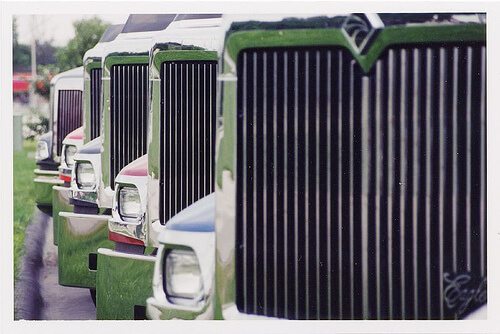Are Truck Driving’s “Good Years” Behind Us?

 Over the past five decades, the significant tax advantages that some states had over others (such as California) spawned a thriving warehouse and distribution industry, creating supply chain centers throughout the mountain states and the Midwest.
Over the past five decades, the significant tax advantages that some states had over others (such as California) spawned a thriving warehouse and distribution industry, creating supply chain centers throughout the mountain states and the Midwest.
It also led to an explosion in the number of trucking companies because of the ability to move manufactured and distributed goods overnight. This also produced a thriving construction industry for not only commercial and industrial structures, but residential subdivisions, as well.
These were gravy days for truckers. Interstate highways and regional roadways were often cluttered with Freightliners, Macks, Sterling and Peterbilt rigs, some long-haul 18-wheelers, others the more rugged vocational truck and trailer combinations so necessary in hauling aggregates, especially in the mining communities that dot Nevada, Colorado, Utah and more recently North Dakota landscapes.
As the recession deepened, the construction industry declined. So did the need for scores of trucking companies. Marginal truck operators couldn’t survive. Many sold their tractors at auction. The gritty ones are hanging on, uncertain they’ve seen the bottom.
Prior to 2006, I’d say 95 percent of our parts and equipment business was for the vocational trucks, says Mike Altimus, general manager for the Peterbilt sales and service center in Sparks, Nevada. Truck sales for the construction business had been so good for such a long time. Today, the vocational sector makes up about 60 percent of our business, and we are now doing about 20 percent of our sales in the over-the-road market. Nevada leads the nation in lost construction industry jobs, which fell by 60 percent between 2006 and 2010. Hardest hit were construction jobs in the mountain states.
And when those jobs disappeared, a substantial part of the trucking segment went with it.
Trucking industry wages here run about $2.5 billion annually and the average driver salary is roughly $42,000, says Paul Enos of Nevada’s Motor Transport Carriers. Still, many drivers have difficulty getting close to those salary numbers. The number of days a driver works can be unpredictable. Some drivers try to hook on with one of the big national over-the-road trucking giants such as Swift, Werner, Knight or England, because they might be assured of more driving time, and thus more money.
It’s still very tough out there, says Norman Leonard, a professional long-haul driver. The loads have declined for some, and a lot of your owner-operators are having difficulty meeting their truck payments.
There are approximately 3,400 trucking companies in Nevada. Not all are making much money, although those servicing the mining industry are faring better.
Ed Meyer, president of Sparks-based NevCal Trucking, says many California-based truck firms also have an unfair advantage. When California unveiled its $1 billion program to improve that state’s highways, it also created a fund to subsidize some truck firms so they could buy new tractor cabs that would meet that state’s toughest-in-the-nation emission standards.
Some of them were getting as much as $50,000, Meyer says. I have to pay $140,000 for a new truck. They are paying much less out of their own pocket, and yet, they are coming here to Reno to compete with me for business. But it is what it is.
Business has been up and down and sometimes hard to read, he says. You don’t know what you’re going to be doing next week a lot of times, but, overall, our business is up. Unfortunately, so are our expenses.
Everybody wants to point to fuel costs and that is true, diesel is more expensive. But so are tires; in fact, anything that comes from petroleum products has pushed the cost of our operations up.
Antipollution equipment makes the truck heavier and it is not as fuel efficient, but Enos credits operators like Meyer.
He knows air quality issues for trucks are not going to go away. The California Air Resources Board regulations are here to stay and that is one reason operators such as Ed have made the investment in a fleet of trucks that is 100 percent CARB compliant.
Meyer says the California emissions regulations are there to force operators to buy a new truck that has the new technology, to require you to buy a truck with the newer engines which are cleaner.
Our trucks literally go down the road and clean the air in some cities, he says, because the new engine has ammonia coming out of the stacks instead of diesel exhaust fluid. In some cities, it is cleaner than the ambient air.